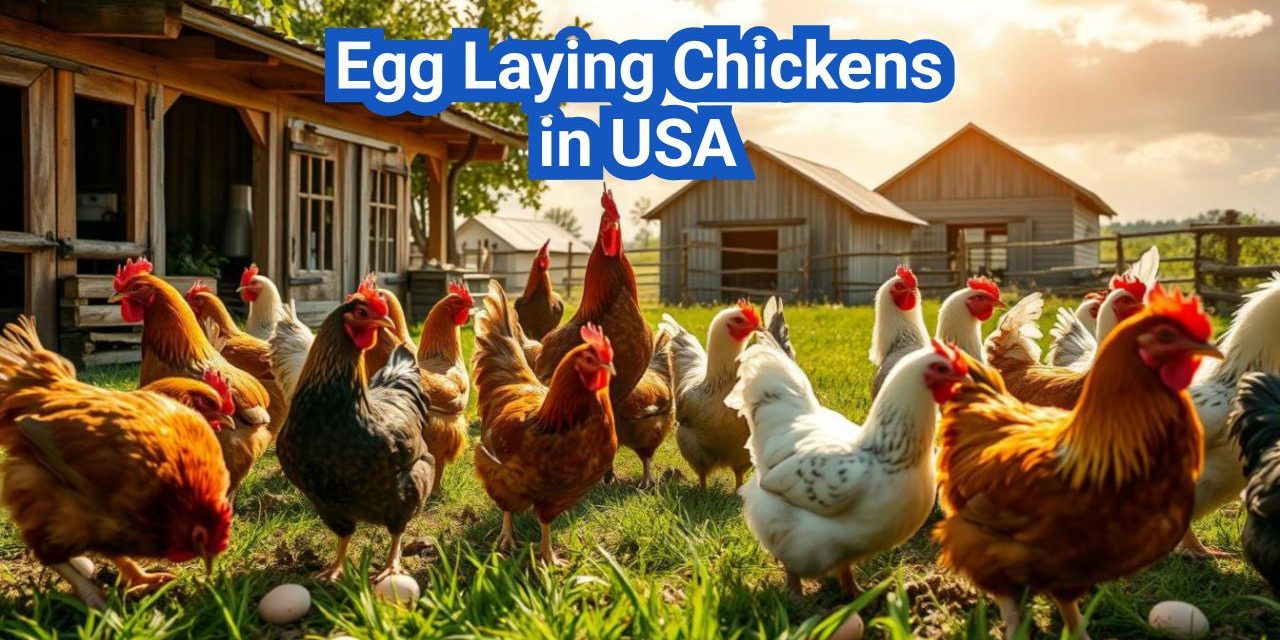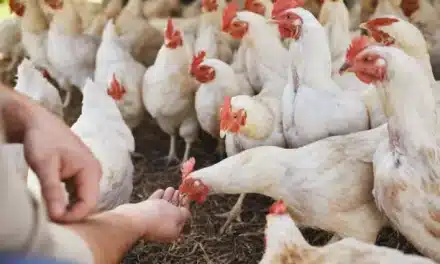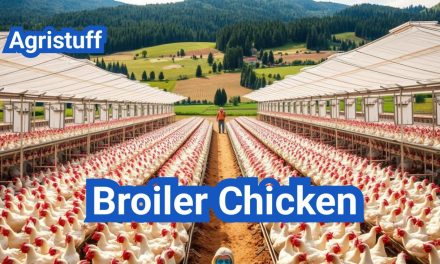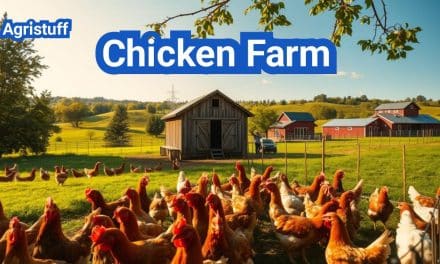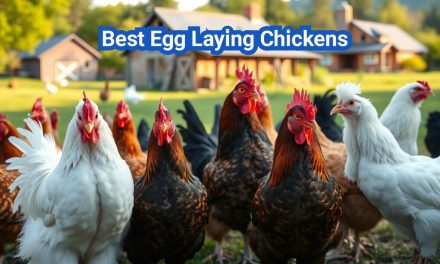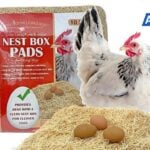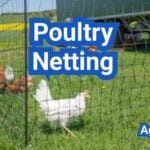For backyard farmers and enthusiasts alike, selecting the right chicken breeds is crucial for a bountiful supply of eggs. With numerous breeds available, understanding their characteristics and egg production capabilities can be overwhelming.
This comprehensive guide will walk you through the best egg laying chickens in America, covering their unique traits, advantages, and what to expect in terms of egg production.
Key Takeaways
- Overview of popular chicken breeds for egg production
- Characteristics and advantages of top breeds
- Tips for selecting the right breed for your needs
- Understanding egg production capabilities
- Care and management for optimal egg laying
The Science Behind Chicken Egg Production
To maximize egg production, it’s essential to comprehend the science that governs how chickens lay eggs. Chicken egg production is a complex biological process influenced by a multitude of factors including genetics, nutrition, and environment.
How the Egg-Laying Process Works | Egg Laying Chickens
The egg-laying process in chickens is a highly specialized function that involves the reproductive system. Hens begin laying eggs at around 18-24 weeks of age, and the process is controlled by a delicate balance of hormones. The formation of an egg takes approximately 24-26 hours, with the yolk being released from the ovary and then surrounded by albumen (egg white) and shell membranes in the oviduct before being finally encased in a calcium carbonate shell.
The egg-laying cycle is influenced by the light exposure, with hens requiring a certain amount of daylight to maintain production. This is why, historically, hens would slow down or stop laying during the winter months when daylight hours are shorter.
“The average hen lays about 300 eggs per year, though this number can vary significantly based on breed, nutrition, and management practices.”
Factors That Influence Laying Capacity | Egg Laying Chickens
Several factors can influence a hen’s laying capacity, including:
- Genetics: Some breeds are bred specifically for their egg-laying abilities, such as the Leghorn.
- Nutrition: A balanced diet that includes adequate protein, calcium, and other nutrients is crucial for maintaining high egg production.
- Environment: Factors such as temperature, humidity, and light exposure can significantly impact laying capacity.
- Health: Hens that are stressed or suffering from health issues will often lay fewer eggs.
Understanding these factors and how they interplay is crucial for anyone looking to optimize their chicken egg production. By providing the right conditions and care, farmers and backyard chicken keepers can maximize the egg-laying potential of their hens.
What Makes a Chicken Breed a Top Egg Layer

Egg production in chickens is influenced by a combination of genetic traits and physical characteristics. Understanding these factors is crucial for identifying top egg-laying breeds.
Genetic Traits of Productive Layers | Egg Laying Chickens
Genetic traits play a significant role in determining a chicken breed’s egg-laying capacity. Breeds like Leghorns and Rhode Island Reds have been selectively bred for their high egg production. Key genetic factors include:
- High egg production genes
- Efficient metabolism for energy utilization
- Stress resistance and overall health
Physical Characteristics to Look For | Egg Laying Chickens
Physical characteristics can also indicate a breed’s potential for egg laying. Top layers often have:
- A robust and healthy appearance
- A well-developed reproductive system
- Specific breed characteristics, such as comb type and feathering
Let’s examine a comparison of some top egg-laying breeds based on their characteristics and production capabilities.
| Breed | Annual Egg Production | Egg Color | Temperament |
|---|---|---|---|
| Leghorn | 280-300 | White | Active, Friendly |
| Rhode Island Red | 200-220 | Brown | Friendly, Docile |
| Ameraucana | 180-200 | Blue | Calm, Friendly |
By understanding the genetic traits and physical characteristics of top egg-laying breeds, farmers and backyard chicken keepers can make informed decisions about which breeds to raise for optimal egg production.
The Top Egg Laying Chickens in America
In the world of backyard chickens, some breeds are renowned for their exceptional egg laying abilities. Whether you’re a seasoned poultry keeper or just starting out, understanding the top egg laying chicken breeds can help you maximize your egg production.
Commercial Egg Laying Champions | Egg Laying Chickens
Commercial egg laying champions are breeds specifically developed for their high egg production capabilities. Breeds like ISA Browns and Lohmann Browns are popular choices among commercial producers due to their ability to lay a high volume of eggs consistently.
| Breed | Eggs per Year | Eggshell Color |
|---|---|---|
| ISA Brown | 300-320 | Brown |
| Lohmann Brown | 310-330 | Brown |
These breeds are not only prolific layers but also relatively low maintenance, making them ideal for large-scale egg production operations.
Heritage Breeds with Impressive Production | Egg Laying Chickens
While commercial breeds lead in terms of sheer volume, heritage breeds like Australorps and Wyandottes are also known for their impressive laying abilities. These breeds offer the added benefit of being friendly and adaptable to backyard environments.
“Heritage breeds bring a unique charm to any flock, and their egg laying abilities are not to be underestimated.” – Poultry Expert
- Australorps: Known for their high egg production and soft, blue eggshells.
- Wyandottes: Friendly, adaptable, and consistent layers of brown eggs.
These heritage breeds not only provide a sustainable source of eggs but also contribute to the genetic diversity of backyard flocks.
Leghorn: America’s White Egg Superstar

Leghorns are celebrated for their prolific egg-laying, producing over 300 eggs per year. This breed has been a cornerstone in American poultry farming for decades, primarily due to its exceptional productivity and adaptability.
White Leghorn Production Capabilities | Egg Laying Chickens
The White Leghorn is particularly renowned for its high egg production. On average, a healthy White Leghorn hen can lay between 280 to 300 large white eggs annually. Their ability to produce eggs consistently throughout the year, with minimal molting, makes them a favorite among commercial egg producers.
Key characteristics of White Leghorns include:
- High egg production rate
- Efficient feed conversion
- Hardiness and adaptability to various climates
Brown Leghorn Varieties and Egg Yield | Egg Laying Chickens
While not as prolific as their White counterparts, Brown Leghorns still offer impressive egg-laying capabilities. They tend to lay around 200-220 large brown eggs per year. The difference in egg production between White and Brown Leghorns can be attributed to their genetic makeup and breeding history.
Factors influencing the egg yield of Brown Leghorns include:
- Diet and nutrition quality
- Living conditions and stress levels
- Health management practices
In conclusion, Leghorns, whether White or Brown, are an excellent choice for those seeking high egg production. Their prolific laying abilities, combined with their hardiness, make them a staple in many egg production operations across America.
Rhode Island Red: The Reliable Brown Egg Producer
Rhode Island Reds have been a staple in American poultry for over a century, prized for their rich brown eggs. This breed has earned its place in the hearts of backyard chicken keepers and commercial farmers alike due to its exceptional egg-laying capabilities and friendly disposition.
Production Red vs. Heritage Strains | Egg Laying Chickens
The Rhode Island Red breed is available in two main strains: Production Red and Heritage. Production Reds are bred specifically for their high egg production, laying around 280-300 large brown eggs per year. In contrast, Heritage Rhode Island Reds are maintained for their historical and genetic value, laying fewer eggs, typically around 200 per year.
- Production Reds: High egg production, around 280-300 eggs per year.
- Heritage Reds: Lower egg production, around 200 eggs per year, but valued for their genetic heritage.
Housing and Care Requirements | Egg Laying Chickens
To ensure optimal egg production, Rhode Island Reds require proper housing and care. Their coop should be well-ventilated, dry, and protected from predators. The recommended space per bird inside the coop is about 3-4 square feet.
- Provide a well-ventilated coop with enough space for the birds to roost comfortably.
- Ensure access to clean water and a balanced diet that includes layer feed.
- Maintain clean nesting boxes to encourage consistent egg laying.
By understanding the differences between Production and Heritage Rhode Island Reds and providing the appropriate care, chicken keepers can enjoy a bountiful supply of brown eggs from this reliable breed.
Ameraucana and Easter Egger: Colorful Egg Layers

The Ameraucana and Easter Egger chickens are celebrated for their ability to lay colorful eggs, adding a unique twist to any egg collection. While both breeds are known for their blue eggs, they have distinct characteristics that set them apart.
Distinguishing Between True Ameraucanas and Easter Eggers
Ameraucana chickens are a pure breed known for their blue eggs, which they lay consistently. Easter Eggers, on the other hand, are a cross between an Ameraucana or Araucana and another breed, resulting in a variety of egg colors, including blue, green, and sometimes pink.
“Easter Eggers can produce a wider range of egg colors due to their mixed heritage.” This makes them a favorite among backyard chicken keepers who enjoy the surprise of collecting eggs in different colors.
Special Care for Blue Egg Layers | Egg Laying Chickens
Both Ameraucana and Easter Egger chickens require similar care to other egg-laying breeds. However, their nutritional needs are slightly different due to their unique egg-laying abilities. Ensuring adequate calcium intake is crucial for maintaining strong eggshells.
A balanced diet that includes a mix of layer feed and supplements like crushed oyster shells can help support their egg production. Regular health checks are also essential to prevent and treat any health issues promptly.
“A well-cared-for Ameraucana or Easter Egger can be a productive and entertaining addition to any backyard flock.”
Sussex, Plymouth Rock, and Orpington Egg Production
The Sussex, Plymouth Rock, and Orpington breeds are notable for their consistent egg production, a trait highly valued by poultry enthusiasts. These breeds have been favored by backyard chicken keepers and commercial producers alike for their reliability and productivity.
Sussex: The Steady Producer | Egg Laying Chickens
The Sussex breed is recognized for its steady egg production. They are known to lay a significant number of eggs annually, making them a popular choice among those seeking consistent egg supply.
- Annual Egg Production: Sussex hens can lay around 250-280 large, light brown eggs per year.
- Temperament: Friendly and docile, making them easy to handle and manage.
- Foraging Ability: Good foragers, which can help reduce feeding costs.
Plymouth Rock: America’s Heritage Layer | Egg Laying Chickens
Plymouth Rock is a heritage breed that has been a staple in American poultry for decades. They are valued for their egg laying capabilities and hardiness.
- Egg Production: Plymouth Rock hens lay approximately 280 large, brown eggs per year.
- Hardiness: Known for their robust health and ability to withstand various climates.
- Dual-Purpose: Used both for eggs and meat, making them a versatile choice.
Orpington: The Winter Layer | Egg Laying Chickens
Orpingtons are another popular breed, particularly noted for their ability to continue laying eggs during the winter months when other breeds may slow down.
- Winter Laying: Orpingtons are known to maintain their egg production during winter.
- Egg Color: They lay large, brown eggs.
- Temperament: Orpingtons are friendly and gentle, making them a great choice for families.
In conclusion, Sussex, Plymouth Rock, and Orpington breeds are excellent choices for those looking for reliable egg production. Their unique characteristics and advantages make them stand out among other breeds.
Modern Hybrid Egg Layers: ISA Brown and Golden Comet
For backyard chicken keepers and commercial producers alike, modern hybrid egg layers like ISA Brown and Golden Comet are revolutionizing the way we think about egg production. These breeds have been specifically developed for their high productivity and adaptability to various farming conditions.
ISA Brown: Commercial Production at Home | Egg Laying Chickens
The ISA Brown is a popular choice among egg producers due to its exceptional laying capabilities and robust health. Originating from a cross between a Rhode Island Red or a similar breed and a White Leghorn, ISA Browns are known for their brown eggs and high production rate, often laying over 300 eggs per year.
One of the key advantages of ISA Browns is their ability to thrive in a variety of environments, making them suitable for both commercial farms and backyard flocks. Their friendly disposition also makes them a favorite among hobbyists.
Golden Comet: First-Year Laying Performance | Egg Laying Chickens
Golden Comets are another highly regarded hybrid breed, known for their prolific egg laying and friendly nature. They are a cross between a Rhode Island Red and a White Leghorn, similar to ISA Browns, but with some distinct characteristics. Golden Comets are praised for their high egg production in their first year, often producing a consistent supply of eggs.
Golden Comets are also appreciated for their hardiness and adaptability, making them an excellent choice for beginners. Their ability to lay well in a range of conditions, including colder climates, adds to their appeal.
In conclusion, both ISA Brown and Golden Comet are excellent choices for those looking to maximize their egg production. Their hybrid vigor, coupled with proper care and nutrition, can lead to a bountiful supply of eggs for any backyard or commercial operation.
How to Set Up the Ideal Environment for Maximum Egg Production

A well-designed coop and comfortable nesting boxes are essential for encouraging hens to lay eggs consistently. The environment plays a crucial role in the health and productivity of your chickens.
Step1: Design Your Coop for Optimal Laying | Egg Laying Chickens
When designing your coop, consider the space and ventilation needed to keep your chickens healthy and stress-free. A good rule of thumb is to provide at least 3-4 square feet per chicken inside the coop. Adequate ventilation is also crucial to remove moisture and ammonia from the coop.
The coop should be predator-proof and protected from the elements. Consider using hardware cloth instead of chicken wire for added security. The roof should be waterproof, and the walls should be well-insulated to regulate the internal temperature.
Step2: Create Perfect Nesting Boxes | Egg Laying Chickens
Nesting boxes are where your hens will lay their eggs, so they need to be comfortable and inviting. Provide one nesting box for every 3-4 hens, and make sure they are easily accessible for egg collection. The boxes should be lined with soft bedding like straw or hay to encourage laying.
Place the nesting boxes in a quiet, dark area of the coop to reduce stress on the hens. Consider adding a lip or ledge to the front of the nesting box to prevent eggs from rolling out and to make it easier to collect them.
- Use a box size that’s about 12 inches square.
- Keep the nesting boxes clean and dry.
- Consider adding a curtain or divider to create a cozy, private space for the hens.
Nutrition Plan for Optimal Egg Production

To maximize egg laying, it’s essential to understand the nutritional needs of your chickens. A well-designed nutrition plan can significantly impact the health and productivity of your flock.
“Nutrition is the foundation upon which egg production is built,” says a leading poultry nutritionist. A balanced diet ensures that hens have the necessary nutrients to produce high-quality eggs consistently.
Step1: Select the Right Layer Feed | Egg Laying Chickens
Choosing the right layer feed is crucial for optimal egg production. Layer feeds are formulated to meet the specific nutritional needs of laying hens, typically containing around 16-18% protein, along with essential vitamins and minerals.
When selecting a layer feed, consider the age and breed of your chickens. For instance, younger hens may require a starter feed before transitioning to a layer feed. It’s also important to choose a feed that is appropriate for your hens’ life stage and production level.
Key components of a good layer feed include:
- Protein: Essential for overall health and egg production
- Calcium: Crucial for strong eggshell production
- Other minerals and vitamins: Necessary for various bodily functions
Step2: Supplement with Calcium and Grit | Egg Laying Chickens
In addition to a balanced layer feed, supplementing with calcium and grit can further support egg production. Calcium is particularly important for maintaining strong eggshells, while grit aids in digestion.
Offering crushed oyster shells or dark leafy greens can provide additional calcium. For grit, ensure it’s finely ground for young birds and coarser for older hens. The right balance of these supplements can help prevent issues like soft-shelled eggs and support overall health.
By focusing on a comprehensive nutrition plan that includes the right layer feed and appropriate supplementation, you can optimize egg production and maintain the health of your flock.
Managing Seasonal Egg Production Fluctuations

To keep egg production steady throughout the year, it’s vital to understand and mitigate the effects of seasonal fluctuations. As the days get shorter or longer, and temperatures vary, egg-laying chickens require different care strategies to maintain their productivity.
Winter Lighting Systems and Schedules | Egg Laying Chickens
During the winter months, the reduced daylight hours can significantly impact egg production. Implementing a proper lighting system in the coop can help maintain the necessary daylight hours for chickens to continue laying eggs efficiently.
Key Considerations for Winter Lighting:
- Ensure a total of 14-16 hours of light per day, including natural and artificial light.
- Use LED lights, which are energy-efficient and produce less heat.
- Implement a timer to maintain a consistent lighting schedule.
| Lighting Schedule | Hours of Light | Expected Egg Production |
|---|---|---|
| Natural Light Only | 8-10 hours | Reduced |
| Supplemental Lighting | 14-16 hours | Optimal |
Summer Heat Management Techniques | Egg Laying Chickens
High temperatures during the summer can stress chickens and decrease egg production. Effective heat management is crucial for maintaining the health and productivity of your flock.
Cooling Strategies for Summer:
- Provide adequate ventilation in the coop to reduce heat buildup.
- Ensure access to plenty of cool water and consider using cooling packs or ice packs.
- Provide shade and consider misting systems to lower the temperature.
| Temperature Range | Impact on Chickens | Management Strategy |
|---|---|---|
| 60-70°F | Comfortable | Standard Care |
| 80-90°F | Stressed | Increased Ventilation and Cooling |
| Above 90°F | High Risk | Emergency Cooling Measures |
Health Management for Productive Layers

To keep your egg-laying chickens healthy and productive, a comprehensive health management plan is essential. Effective health management involves regular monitoring, preventative care, and prompt treatment of any health issues that arise.
Maintaining the health of your egg-laying hens is crucial not only for their well-being but also for maximizing egg production. A well-structured health management strategy helps in early detection and prevention of diseases, thereby reducing the risk of illness spreading among the flock.
Preventative Care Schedule | Egg Laying Chickens
A preventative care schedule is a critical component of health management for egg-laying chickens. This includes regular vaccinations, parasite control measures, and health checks.
- Regular vaccinations against common poultry diseases
- Parasite control measures, including treatments for mites, lice, and worms
- Health checks to monitor the overall health and detect any potential issues early
Implementing a preventative care schedule helps in maintaining the health and productivity of your flock. It’s also important to keep accurate records of vaccinations, treatments, and health checks to track the health history of your chickens.
Recognizing and Treating Common Ailments | Egg Laying Chickens
Egg-laying chickens can be susceptible to various health issues, including respiratory infections, reproductive problems, and nutritional deficiencies. Being able to recognize the signs of these common ailments is crucial for prompt treatment and preventing the spread of disease.
Common signs of illness in chickens include changes in behavior, such as lethargy or loss of appetite, changes in droppings, or visible signs of infection. Prompt isolation and treatment of affected birds are essential to prevent the spread of disease.
| Disease/Condition | Symptoms | Treatment |
|---|---|---|
| Respiratory Infections | Coughing, sneezing, labored breathing | Antibiotics, improved ventilation |
| Reproductive Issues | Changes in egg laying, prolapse | Nutritional adjustments, veterinary care |
| Nutritional Deficiencies | Poor growth, feather condition | Dietary adjustments, supplements |
By implementing a comprehensive health management plan that includes preventative care and prompt treatment of common ailments, you can maintain the health and productivity of your egg-laying chickens.
Collecting and Storing Farm Fresh Eggs

Maintaining the quality of farm fresh eggs starts with understanding the best practices for their collection and storage. Proper techniques ensure that the eggs remain fresh and safe for consumption.
Best Practices for Egg Collection | Egg Laying Chickens
Collecting eggs frequently is crucial to prevent breakage and keep them clean. It’s recommended to collect eggs at least twice a day, especially during hot weather when eggs can deteriorate more quickly. Gentle handling is essential to avoid cracking the eggs. Using baskets or containers specifically designed for egg collection can help in keeping the eggs safe.
Proper Cleaning and Storage Methods | Egg Laying Chickens
Before storing, eggs should be cleaned gently with a dry cloth or brush to remove any dirt. Avoid washing eggs with water, as it can strip away the natural protective coating. For storage, eggs should be kept in a cool, dry place. The ideal storage temperature is around 45°F to 50°F, with humidity levels between 50% to 60%.
Eggs should be stored with the large end facing upwards to keep the yolk centered. Using egg cartons or specialized egg storage containers can help in maintaining their quality. It’s also important to keep eggs away from strong-smelling foods, as they can absorb odors easily.
| Storage Method | Ideal Conditions | Benefits |
|---|---|---|
| Refrigeration | Temperature: 45°F – 50°F, Humidity: 50% – 60% | Prolongs freshness, reduces bacterial growth |
| Room Temperature | Cool, dry place, away from direct sunlight | Maintains egg quality if consumed within a short period |
| Egg Cartons | Protects eggs from breakage, keeps them clean | Reduces damage during storage and transport |
By following these guidelines, you can enjoy your farm fresh eggs for a longer period while maintaining their quality and safety.
Troubleshooting Common Egg Laying Problems
When hens stop laying or produce eggs of poor quality, it’s essential to identify the root cause to implement effective solutions. Egg laying problems can stem from various factors, including nutrition, health, and environmental conditions.
Understanding these factors is crucial for backyard chicken keepers to maintain a productive flock. By addressing the underlying causes of egg laying issues, chicken enthusiasts can take corrective actions to restore normal egg production.
Why Hens Stop Laying: Diagnosis and Solutions | Egg Laying Chickens
Hens may stop laying eggs due to stress, nutritional deficiencies, or health issues. Diagnosing the cause requires observing the hens’ behavior, checking their nutrition, and inspecting their health.
- Stress caused by changes in environment or predator threats
- Nutritional deficiencies, particularly in calcium or protein
- Health issues such as respiratory infections or parasites
Solutions involve addressing these underlying issues. For instance, providing a balanced diet, ensuring adequate calcium intake, and maintaining a clean, stress-free environment can help restore egg laying.
Addressing Egg Quality and Shell Issues | Egg Laying Chickens
Egg quality and shell issues can be just as problematic as a decrease in egg production. Factors affecting egg quality include nutrition, age of the hens, and health conditions.
| Issue | Cause | Solution |
|---|---|---|
| Thin or weak eggshells | Insufficient calcium or vitamin D3 | Supplement with crushed oyster shells or dark leafy greens |
| Soft or irregular egg shapes | Stress or nutritional imbalance | Ensure a balanced diet and reduce stress |
| Eggs with blood or meat spots | Age of the hen or nutritional factors | Provide a diet rich in vitamins and minerals |
By understanding and addressing these common egg laying problems, chicken keepers can improve both the quantity and quality of eggs produced by their flock.
At The End of: Top Egg Laying Chickens in USA
Breeding egg laying chickens can be a rewarding experience, especially when you understand the characteristics and needs of top egg laying chickens. This guide has explored various aspects, from the science behind egg production to the ideal environment for maximum laying.
Top egg laying chickens, such as Leghorn and Rhode Island Red, offer impressive production capabilities. Understanding their genetic traits, physical characteristics, and nutritional needs is crucial for optimal egg production.
By implementing proper health management, nutrition plans, and coop design, you can maximize egg laying potential. Whether you’re a seasoned farmer or a beginner, this guide provides valuable insights into the world of egg laying chickens.
By applying these principles, you can enjoy a bountiful supply of fresh eggs from your top egg laying chickens.
FAQ
What are the most productive egg-laying chicken breeds in USA?
The top egg-laying chicken breeds in America include Leghorn, Rhode Island Red, Ameraucana, Easter Egger, Sussex, Plymouth Rock, Orpington, ISA Brown, and Golden Comet.
How do chickens lay eggs and what affects their laying capacity?
Chickens lay eggs through a complex biological process involving their reproductive system. Factors such as nutrition, lighting, temperature, and health can influence their laying capacity.
What characteristics make a chicken breed a top egg layer?
Top egg-laying breeds often possess genetic traits such as high egg production potential, and physical characteristics like a robust build and a well-developed reproductive system.
What is the difference between white and brown Leghorns in terms of egg production?
White Leghorns are known for their high egg production, laying around 280-300 large white eggs per year, while brown Leghorns also lay white eggs but may have slightly lower production.
How do ISA Browns and Golden Comets compare in terms of egg production?
ISA Browns are known for their high egg production, laying around 300-320 large brown eggs per year, while Golden Comets also lay brown eggs, producing around 200-220 eggs per year.
What are the best practices for collecting and storing farm fresh eggs?
Eggs should be collected regularly, stored in a cool dry place, and kept clean to maintain their quality and freshness.
How can I manage seasonal fluctuations in egg production?
Providing supplemental lighting during winter and managing heat stress during summer can help maintain consistent egg production throughout the year.
What are the key factors in maintaining the health of egg-laying hens?
A well-balanced diet, regular health checks, and preventative care such as vaccinations and parasite control are essential for maintaining the health of egg-laying hens.
Why do hens stop laying eggs and how can I address the issue?
Hens may stop laying due to factors such as stress, nutrition deficiencies, or health issues. Addressing the underlying cause, such as adjusting their diet or environment, can help resolve the issue.
How can I troubleshoot common egg-laying problems?
Diagnosing the issue, such as checking for signs of stress or disease, and taking corrective action, like adjusting their nutrition or environment, can help resolve common egg-laying problems.
What is the ideal environment for maximum egg production?
A well-designed coop with adequate ventilation, suitable nesting boxes, and a comfortable living space can help promote maximum egg production.
What nutrition plan is best for optimal egg production?
A balanced layer feed supplemented with calcium and grit can provide the necessary nutrients for optimal egg production.
Conclusion of: Top Egg Laying Chickens in USA
If you’re looking to start a backyard flock or expand your homestead, choosing the right egg laying chickens is crucial. The best breeds combine high productivity, hardiness, and a friendly temperament—perfect for both beginners and experienced poultry keepers.
In this guide, we’ll explore the top egg laying chickens in the USA, their egg production rates, temperament, and ideal conditions for raising them. Whether you want colorful eggs, cold-hardy breeds, or prolific layers, we’ve got you covered.
What Makes a Great Egg Laying Chicken?
Not all chickens are equal when it comes to egg production. The best egg laying chickens share these key traits:
- High egg yield (250–320 eggs per year)
- Hardiness (adaptability to climate extremes)
- Friendly temperament (easy to handle, good with families)
- Long laying lifespan (consistent production for years)
For a deeper dive into poultry genetics, check out this guide from the Livestock Conservancy.
1. ISA Brown – The Ultimate Egg Machine
If you want maximum egg production, the ISA Brown is a top contender. These chickens lay 300+ large brown eggs per year, making them a favorite among backyard farmers. They’re docile, easy to care for, and start laying as early as 16 weeks.
Key Features:
- 300–320 eggs/year
- Friendly & low-maintenance
- Great for beginners
For more on ISA Browns, visit My Pet Chicken.
2. Leghorn – The Classic White Egg Layer
The Leghorn is the backbone of commercial egg farming, known for its 280–320 large white eggs per year. They’re energetic, heat-tolerant, and excellent foragers.
Key Features:
- High egg production
- Heat-resistant
- Best for free-ranging
Learn more about Leghorns from The Livestock Conservancy.
3. Rhode Island Red – The All-American Favorite
A dual-purpose breed, the Rhode Island Red is hardy, friendly, and lays 250–300 brown eggs per year. They thrive in both cold and hot climates, making them a versatile choice.
Key Features:
- Reliable layers
- Cold-hardy
- Great for meat & eggs
For breed standards, check American Poultry Association.
4. Australorp – The Cold-Climate Champion
Originally from Australia, Australorps are known for their 250–300 light brown eggs per year. They’re calm, great with kids, and handle winter conditions well.
Key Features:
- Excellent winter layers
- Docile temperament
- Long lifespan
For breeding tips, visit Murray McMurray Hatchery.
5. Plymouth Rock – The Family-Friendly Layer
The Plymouth Rock (or Barred Rock) is a steady layer of 200–250 brown eggs per year. They’re gentle, great for beginners, and adapt well to confinement.
Key Features:
- Kid-friendly
- Cold-resistant
- Long laying period
For purchasing options, see Cackle Hatchery.
6. Golden Comet – The Hybrid Powerhouse
A cross between Rhode Island Reds and Leghorns, Golden Comets lay 280–300 brown eggs per year. They’re early layers (starting at 16 weeks) and very efficient feed converters.
Key Features:
- Early egg production
- Low feed consumption
- Great for small farms
For hybrid breed details, visit Hoover’s Hatchery.
7. Easter Egger – The Colorful Egg Producer
If you love variety, Easter Eggers lay blue, green, or pink eggs (200–280 per year). They’re friendly, quirky, and add fun to any flock.
Key Features:
- Unique egg colors
- Good foragers
- Great pets
For colorful egg breeds, see My Pet Chicken.
8. Sussex – The Reliable British Import
Sussex chickens produce 200–250 light brown eggs per year. They’re calm, great for free-ranging, and lay consistently even in winter.
Key Features:
- Steady production
- Excellent foragers
- Gentle disposition
For heritage breed info, visit The Livestock Conservancy.
9. Black Copper Marans – The Gourmet Egg Layer
Famous for their dark chocolate-brown eggs, Marans lay 180–220 eggs per year. They’re calm, beautiful, and perfect for specialty egg markets.
Key Features:
- Luxury egg color
- Cold-hardy
- Great for small farms
For breeding standards, check American Marans Club.
10. Cream Legbar – The Blue Egg Specialist
Cream Legbars lay 230–250 blue eggs per year. They’re autosexing (easy to sex at hatch) and active foragers.
Key Features:
- Unique blue eggs
- Good winter layers
- Low broodiness
For autosexing breeds, visit The Poultry Site.
Final Thought
Choosing the best egg laying chickens depends on your climate, space, and egg preferences. Whether you prioritize quantity (ISA Brown, Leghorn) or uniqueness (Easter Egger, Marans), there’s a perfect breed for every backyard.

